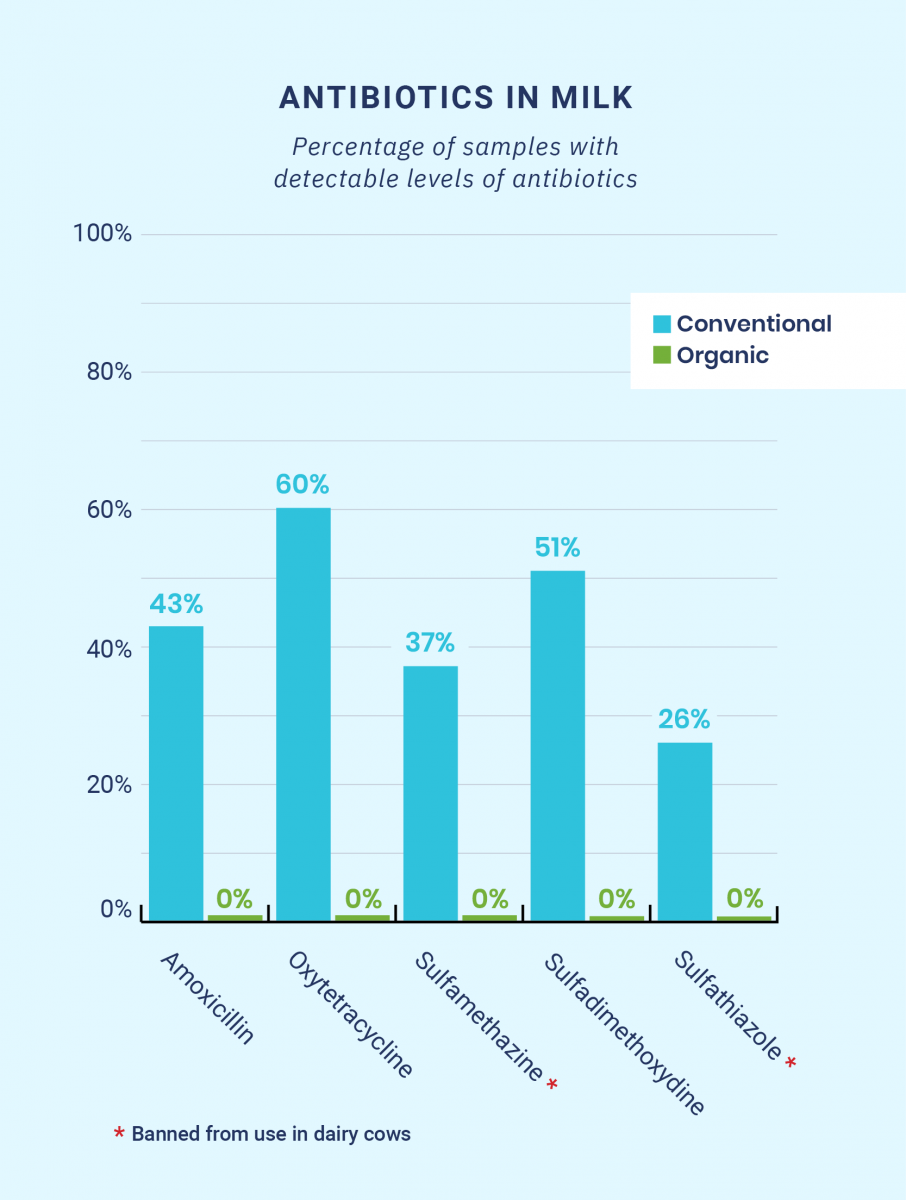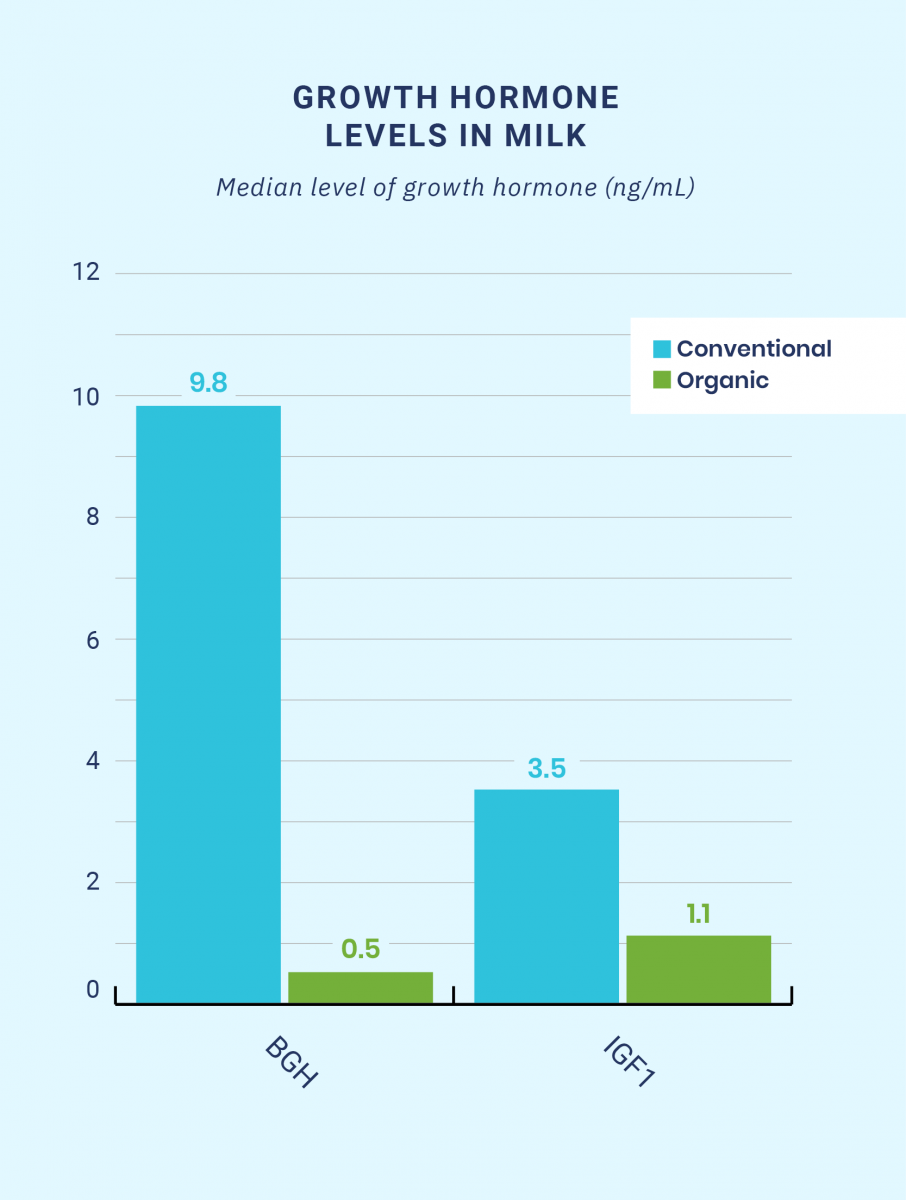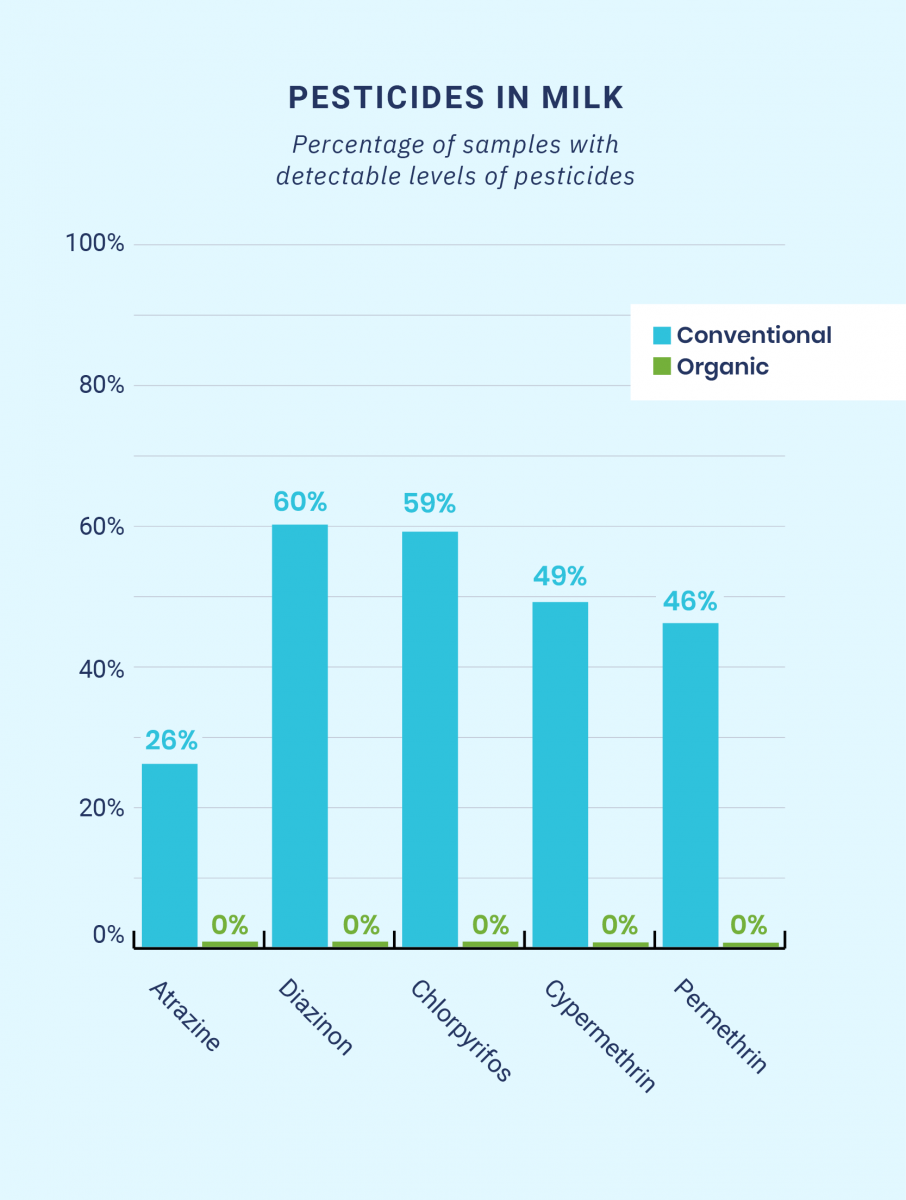Choose Organic for the Cleanest Milk
Samples of non-organic retail milk tested positive for residues of antibiotics – two of which are illegal in the United States and banned from dairy production -- and commonly-used controversial pesticides. Organic milk showed no such contaminants. Residues of growth hormones in conventional milk were up to 20 times higher than in organic.
Learn more about this new study conducted by researchers at Emory University, in collaboration with The Organic Center. Here are the highlights:

Antibiotic residues were detected in 60% of conventional milk samples. 37% of the samples tested positive for sulfamethazine, and 26% for sulfathiazole, both of which have long been outlawed in lactating dairy cows. One of the samples contained residue of amoxicillin that exceeded the federally allowed limit.

Bovine growth hormone (bGH) residue levels were found to be 20 times higher in conventional milk than organic.

Pesticide residues of chlorpyrifos, atrazine, permethrin and more were found in 26 percent to 60 percent of the conventional samples, with residues of the controversial and restricted-use pesticide chlorpyrifos in 59% of the conventional samples.
The study shows that organic is an easy way to avoid contaminants in milk, providing consumers with an option free of commonly used antibiotics, pesticides and synthetic growth hormones.
“Consumers can feel safe in choosing organic milk. This study finds that the presence of antibiotics and pesticides in conventional milk is much more prevalent and pervasive than previously thought – and that organic milk doesn’t contain any of these contaminants.”
Dr. Jessica Shade, Director of Science Programs for The Organic Center.
Aqua
Main color:
#74b03aHover:
#7fdbffActive:
#46c8dfTitle:
#ffffffTitle Hover:
#ffffffTitle Active:
#ffffff
Because the overuse of antibiotics can increase resistance to those antibiotics and make them less effective for both humans and animals, the FDA has set limits on detectable levels of antibiotics in food. In this study, antibiotics were not found in organic samples, but were detected in 60% of conventional milk samples. Specifically, amoxicillin, oxytetracycline, sulfamethazine, sulfadimethoxine, and sulfathiazole were all detected in conventional milk.
Importantly, residues of sulfamethazine were found in 37 percent of the conventional samples, and sulfathiazole in 26 percent. The use of both of these antibiotics for lactating cows has long been banned by the Food and Drug Administration (FDA). The biggest health concern is a life-threatening allergic reaction (acute hypersensitivity). About 2 percent of the general population is severely allergic to sulfa drugs. Outside of allergic reactions, there are many adverse side effects connected to the sulfonamide class of antibiotics. In addition, one of the conventional samples contained residue levels of amoxicillin that exceeded the FDA limit.
“The presence of antibiotics in the food supply has raised concerns about their possible role in increasing antibiotic resistance and hypersensitivity reactions,” said the study.
While there is no federal limit set for cow-derived hormones in milk, this study found levels of the bovine growth hormone (bGH) to be 20 times higher in conventional milk than organic. The study said that since growth hormones are produced naturally by dairy cattle, some level of bGH can be expected in all milk samples. The dramatically higher residues found in conventional milk “suggests that the difference reflects the use of synthetic growth hormones” in conventional dairy, according to the study.
The results found no residues of commonly-used pesticides in any of the organic milk samples, but residues in up to 60 percent of the conventional samples.
The researchers tested a wide variety of pesticides currently used in conventional dairy production. All of the organic samples tested zero for pesticide residues. However, the tests on conventional milk showed residues of different pesticides in 26 percent to 60 percent of the samples. Those pesticides included atrazine (26 percent), chlorpyrifos (59 percent), cypermethrin (49 percent), diazinon (60 percent), and permethrin (46 percent). *
Of note is that conventional milk tested positive for residues of the dangerous neurotoxin chlorpyrifos in 59 percent of the samples. Chlorpyrifos is associated with developmental issues in babies and children. Restrictions were imposed on the use of chlorpyrifos in residential settings in 2000. The pesticide was court ordered to be banned in agriculture in 2018, but this ban has been appealed by the current administration.
Citing growing evidence that chloripyfos “causes serious health effects in children and other sensitive populations at lower levels of exposure than previously understood,” California recently announced plans to ban the pesticide. While use of the chemical in California – one the country’s leading agricultural states – has declined in recent year, the state is the biggest user of the pesticide, applying almost a million pounds to fields and crops in 2016. Several other states have started to take action to crack down on the use of chloripyrifos.
